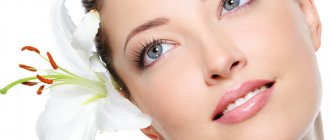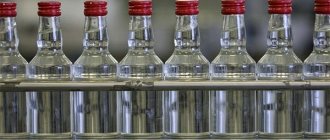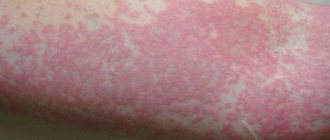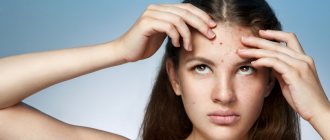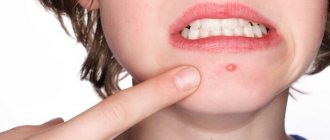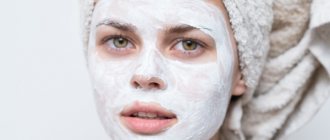Compound
Lamisil tablets contain the active component terbinafine (in the form of hydrochloride), as well as additional components: colloidal anhydrous silicon dioxide, magnesium stearate, sodium starch glycolate, MCC, methylhydroxypropylcellulose.
Lamisil spray contains terbinafine hydrochloride as an active component, as well as additional components: 96% ethanol, macrogol cetostearate, propylene glycol, water.
The ointment contains the active component terbinafine hydrochloride , as well as additional substances: sodium hydroxide, benzyl alcohol, sorbitan stearate, stearyl alcohol, cetyl palmitate, cetyl alcohol, isopropyl myristate, polysorbate 60, water.
Release form
Several forms of this medicine are produced.
Lamisil tablets can be white or white-yellow in color, they are biconvex, round, scored, and chamfered. Around the tablet is the inscription “LAMISIL 250“. The surface of the tablet is rough. Contained in blisters of 7 or 14 pieces, the blisters are placed in cardboard packs.
Lamisil spray is a colorless transparent liquid (may have a light yellow tint) with a characteristic odor. Contained in polyethylene bottles equipped with a spray tip, 15 and 30 ml. The bottle is placed in cardboard packs.
Lamisil ointment is homogeneous, white in color, and has a slight characteristic odor. Contained in aluminum tubes of 15 and 30 g each. The tubes are placed in cardboard packs.
pharmachologic effect
Lamisil is an antifungal agent.
Terbinafine is an allylamine that has a wide spectrum of action against fungi. Acts on fungi that cause diseases of the hair, nails, and skin. These are Trichophyton fungi (for example, Trichophyton tonsurans, Trichophyton mentagrophytes, Trichophyton rubrum, Trichophyton violaceum, Trichophyton verrucosum), Epidermophyton floccosum, Microsporum (Microsporum canis), Candida yeast fungi (Candida albicans) and Pityrosporum.
When used in low concentrations, terbinafine produces a fungicidal effect against dermatophytes, molds and a number of dimorphic fungi. Concerning yeast fungi, it demonstrates fungicidal or fungistatic activity.
Under the influence of terbinafine, the biosynthesis of sterols in the cell is specifically suppressed at a very early stage. As a result, there is a lack of ergosterol and accumulation of squalene inside the cells, as a result of which the fungal cells die. Terbinafine works by inhibiting the enzyme squalene epoxidase in the fungal cell membrane.
If Lamisil is prescribed orally, the concentrations of the drug that provide a fungicidal effect accumulate in the skin, nails and hair.
When used externally, the drug also demonstrates a wide spectrum of antifungal activity.
Terbinafine does not affect the cytochrome P450 system, so it does not affect the metabolism of hormones and other drugs.
Pharmacological properties of the drug Lamisil
Terbinafine (E)-N-(6,6-dimethyl-2-hepten-4-inyl)-N-methyl-1-naphthalenemethanamine is a broad-spectrum antifungal agent of the allylamine group. Terbinafine in low concentrations has a fungicidal effect against dermatophytes, molds and some dimorphic fungi. Activity against yeast fungi, depending on their type, can be fungicidal or fungistatic. The drug has a long-lasting effect, which makes it possible to achieve an effect with short-term use. Terbinafine specifically inhibits the early stage of sterol biosynthesis in the cell membrane of the fungus. This leads to ergosterol deficiency and intracellular accumulation of squalene, which causes the death of the fungal cell. Terbinafine works by inhibiting the enzyme squalene epoxidase in the cell membrane of the fungus. This enzyme does not belong to the cytochrome P450 system. Terbinafine does not affect the metabolism of hormones or other drugs. When applied externally, ≤5% of the applied dose is absorbed, so absorption of terbinafine into the systemic circulation is negligible. After 7 days of treatment with Lamisil cream, terbinafine concentrations exceeding those required for a fungicidal effect are detected in the stratum corneum of the epidermis for at least 7 days after cessation of therapy.
Pharmacokinetics and pharmacodynamics
After Lamisil tablets have been taken orally, terbinafine is well absorbed; the level of absolute bioavailability of terbinafine due to the “first pass” effect is about 50%. After the drug has been taken at a dose of 250 mg orally, the maximum plasma concentration is observed after 1.5 hours.
The maximum concentration increases if the drug is taken regularly.
Food intake has little effect on the bioavailability of the active substance; therefore, there is no need to adjust the dose of the drug when taken simultaneously with food.
Terbinafine is 99% bound to plasma proteins. Its rapid penetration through the dermal layer of the skin and concentration in the lipophilic stratum corneum are noted. Its high concentrations are also noted in hair, hair follicles, and skin with a large number of sebaceous glands. The presence of the active component of the drug in the nail plates is determined in the first weeks after the start of treatment.
metabolites are formed that do not demonstrate antifungal activity and are excreted mainly through the kidneys.
If Lamisil cream or spray is applied topically, the absorption of terbinafine is less than 5%. There is minor systemic exposure.
Lamisil overdose, symptoms and treatment
The low systemic absorption of terbinafine in topical forms makes the likelihood of overdose very low. Accidental ingestion of the contents of one 30 g tube of cream (containing 300 mg of terbinafine hydrochloride) can be compared to taking 1 tablet of Lamisil 250 mg (oral dosage form). Nausea, pain in the epigastric region, dizziness, diarrhea, neutropenia, thrombocytopenia may occur. If it enters the stomach, induce vomiting. Treatment is symptomatic.
Indications for use
It is advisable to take Lamisil tablets in the following cases:
- with onychomycosis , which occurs due to exposure to dermatophyte fungi;
- for mycoses of the scalp;
- for fungal infections of the skin - treatment of foot fungus, dermatomycosis of the legs, torso, as well as for the treatment of infections caused by fungi of the genus Candida.
Please note that oral Lamisil is not an effective treatment for lichen versicolor .
It is advisable to use Lamisil cream and spray in the following cases:
- for the purpose of preventing mycoses of the feet, fungal infections of smooth skin, inguinal athlete's foot, which were provoked by dermatophytes;
- for the treatment of diaper rash caused by mold fungi;
- for the treatment of versicolor, caused by dimorphic fungi.
Indications for use of the drug Lamisil
Terbinafine in spray, cream and gel forms is prescribed for fungal skin infections caused by dermatophytes such as Trichophyton (eg T. rubrum, T. mentagrophytes, T. verrucosum, T. violaceum), Microsporum canis and Epidermophyton floccosum, e.g. feet, dermatomycosis of the trunk and inguinal; pityriasis versicolor ( Pityriasis versicolor ), caused by Pityrosporum orbiculare (also known as Malassezia furfur ); the drug in the form of a cream is also prescribed for skin infections caused by yeast fungi of the genus Candida (for example, C. albicans ) .
Contraindications
The drug is not prescribed to people who suffer from hypersensitivity to the components of the drug. You should not treat nail fungus and other diseases with Lamisil if the patient suffers from liver disease, both chronic and acute. Therefore, before starting treatment, it is necessary to determine whether the patient suffers from such diseases.
It should also be taken into account that hepatoxicity may occur both in people with liver disease and in those who have not suffered from such diseases. Therefore, patients should know that if, while using the product, constant nausea, a feeling of fatigue, jaundice, pain in the right hypochondrium, darkening of the urine, etc. appear, they should definitely consult a specialist and conduct a liver examination.
It is not recommended to take Lamisil for people with impaired renal function.
Lamisil Tablets, pack, 14 pcs, 250 mg, for oral administration, for adults
Side effect
From the hematopoietic system: very rarely - neutropenia, agranulocytosis, pancytopenia. In very rare cases, when using the drug, the development of qualitative or quantitative changes in blood cells (neutropenia, agranulocytosis, thrombocytopenia, pancytopenia) was observed. If qualitative or quantitative changes in blood cells develop, the cause of the disturbances should be established and consideration should be given to reducing the dose of the drug or, if necessary, stopping therapy with Lamisil. From the immune system: very rarely - anaphylactoid reactions (including angioedema), cutaneous and systemic lupus erythematosus. From the nervous system: often - headache; sometimes - disturbances in taste, including their loss (usually recovery occurs within a few weeks after stopping treatment); very rarely - dizziness, paresthesia, hypoesthesia. There are isolated reports of cases of long-term disturbances in taste. In some cases, while taking the drug, there was a decrease in food consumption, which led to a significant decrease in weight. From the hepatobiliary system: rarely - hepatobiliary dysfunction (mainly cholestatic in nature), including very rare cases of severe liver failure (some fatal or requiring liver transplantation). In most cases where liver failure developed, patients had serious concomitant systemic diseases and the causal relationship of liver failure with Lamisil was questionable. From the digestive system: very often - a feeling of fullness in the stomach, loss of appetite, dyspepsia, nausea, mild abdominal pain, diarrhea. From the skin and subcutaneous tissue: very often - mild skin reactions (rash, urticaria); very rarely - serious skin reactions (including Stevens-Johnson syndrome, toxic epidermal necrolysis); psoriasis-like skin rashes or exacerbations of psoriasis. Very rarely, cases of hair loss have been reported, although the cause-and-effect relationship of this phenomenon with taking the drug has not been established. If a progressive skin rash develops, treatment should be discontinued. From the musculoskeletal system: very often - arthralgia, myalgia. Other: very rarely - feeling of fatigue.
Side effects
Patients generally tolerate Lamisil well; side effects are usually mild to moderate and transient. Negative manifestations may be the following:
- Hematopoiesis : in very rare cases - agranulocytosis, neutropenia, pancytopenia, thrombocytopenia.
- Immune system : in very rare cases - lupus erythematosus , anaphylactoid reactions.
- Nervous system : headache , taste disturbances up to loss, in rare cases - paresthesia , dizziness , hypoesthesia .
- Hepatobiliary system : in rare cases - hepatobiliary dysfunction, liver failure.
- Digestion : loss of appetite , feeling of fullness in the stomach, nausea, dyspepsia, diarrhea , abdominal pain.
- Skin reactions : mild skin manifestations in the form of urticaria and rash, in rare cases - severe skin reactions, exacerbation of psoriasis , hair loss.
- Musculoskeletal system : myalgia, arthralgia.
- When using the spray, allergic skin manifestations may develop.
Lamisil® (Lamisil®)
Lamisil® was generally well tolerated. Side effects are usually mild or moderate and transient. The following are adverse events that were observed during clinical trials or during the post-marketing period.
When assessing the frequency of side effects, the following gradations were used: “very often” (≥1/10), “often” (from ≥1/100 <1/10), “infrequently” (≥1/1000 <1/100), “rare” (≥1/10000 <1/1000), “very rare” (<1/10000), including isolated reports.
Disorders of the blood and lymphatic system: infrequently - anemia; very rarely - neutropenia, agranulocytosis, pancytopenia, thrombocytopenia.
Immune system disorders: very rarely - anaphylactoid reactions (including angioedema), cutaneous and systemic lupus erythematosus (or their exacerbation).
Mental disorders: often - depression; infrequently - anxiety.
Nervous system disorders: very often - headache; often - dizziness, disturbances in taste, up to their loss (usually recovery occurs within a few weeks after stopping treatment). There are isolated reports of cases of long-term disturbances in taste. In some cases, while taking the drug, exhaustion was noted. Uncommon: paresthesia, hypoesthesia.
Visual disturbances: infrequently - visual disturbances.
Hearing and labyrinthine disorders: uncommon - tinnitus.
Disorders of the liver and biliary tract: rarely, hepatobiliary dysfunction (mainly of cholestatic nature), incl. liver failure, including very rare cases of severe liver failure (some fatal or requiring liver transplantation; in most cases where liver failure developed, the patient had serious underlying systemic diseases and the causal relationship of liver failure with Lamisil® was questionable ), hepatitis, jaundice, cholestasis, increased activity of liver enzymes.
Disorders of the digestive system: very often - bloating, loss of appetite, dyspepsia, nausea, mild abdominal pain, diarrhea.
Disorders of the skin and subcutaneous tissues: very often - rash, urticaria; uncommon - photosensitivity reactions; very rarely - Stevens-Johnson syndrome, toxic epidermal necrolysis, acute generalized exanthematous pustulosis, erythema multiforme, toxic skin rash, exfoliative dermatitis, bullous dermatitis, psoriasis-like skin rashes or exacerbations of psoriasis, alopecia.
Musculoskeletal and connective tissue disorders: very often - arthralgia, myalgia.
General disorders: often - feeling of fatigue; infrequently - increased body temperature.
Laboratory and instrumental data: infrequently - weight loss (secondary to a disturbance in the sense of taste).
Based on spontaneous reports received during the post-registration period and literature data, the following adverse events were identified, the frequency of which, due to the inaccurate number of patients, cannot be established:
Immune system disorders: anaphylactic reactions, serum sickness-like syndrome.
Visual disturbances: blurred vision, decreased visual acuity.
Skin and subcutaneous tissue disorders: drug rash with eosinophilia and systemic symptoms (rash, swelling, fever and swollen lymph nodes).
Hearing and labyrinthine disorders: hearing loss, hearing impairment.
Vascular disorders: vasculitis.
Nervous system disorders: loss of smell, including for a long period of time, decreased sense of smell.
Digestive system disorders: pancreatitis.
Musculoskeletal and connective tissue disorders: rhabdomyolysis.
General disorders: influenza-like syndrome.
Laboratory and instrumental data: increased activity of creatine phosphokinase in the blood serum.
If any of the side effects indicated in the instructions get worse, or you notice any other side effects not listed in the instructions, tell your doctor.
Instructions for use of Lamisil (Method and dosage)
The duration of use of all forms of the drug depends on the severity of the disease and the doctor’s prescription.
Instructions for Lamisil tablets
As a rule, adult patients are prescribed 250 mg of the drug once a day. For children, tablets are prescribed in a dose that depends on their weight. For a child weighing up to 20 kg, 62.5 mg per day is prescribed. If the patient's body weight is from 20 to 40 kg, 125 mg is prescribed; if the child's weight is more than 40 kg, he is prescribed 250 mg.
For dermatomycosis of the feet, treatment, depending on the patient’s condition, lasts from 2 to 6 weeks. For patients with dermatomycosis of the legs, torso , as well as skin candidiasis, treatment lasts from 2 to 4 weeks. For mycosis of the scalp, it is recommended to treat for 4 weeks. Patients with onychomycosis should take the drug for 6 to 12 weeks.
Spray Lamisil, instructions for use
The spray can be used by adult patients 1 or 2 times a day, depending on the doctor’s prescription. Before applying the product, you need to clean and dry those areas of the skin that have been affected by the disease. You need to spray Lamisil in such an amount as to completely moisturize the affected areas, and also apply it to the adjacent parts of the skin. As a rule, for dermatomycosis, diaper rash, and inguinal athlete's foot, treatment continues for one week, and the spray is sprayed once a day. Patients with lichen versicolor are prescribed to use the spray 2 times a day for 1 week. This remedy is not prescribed to children, as there is not enough experience in using the medicine in children.
Lamisil cream, instructions for use
The ointment can be used 1-2 times a day to treat adult patients and children over 12 years of age. Before applying the product, you need to thoroughly clean the skin and dry it. The cream should be applied to the affected areas of the skin, as well as to the places next to them. Apply a thin layer and rub lightly into the skin. If it is necessary to cure diaper rash, you can cover the areas where the cream is applied with gauze. It is advisable to do this at night. For dermatomycosis of the feet, treatment lasts for 1 week, you need to apply the cream once a day. If the product is prescribed for cracks and itching of the skin that develop as a result of a fungus, treatment lasts two weeks, the product should be applied 1-2 times a day. Patients with skin candidiasis need to use the cream 1-2 times a day; treatment, depending on the patient’s condition, lasts 1-2 weeks. Patients with lichen versicolor should be treated for two weeks, applying ointment 1-2 times a day. If the remedy for foot fungus and other diseases is not used regularly, the risk of recurrence of the infection increases.
Use of the drug Lamisil
The duration of treatment depends on the indications and severity of the disease. Adults and children over 12 years of age. Lamisil cream is applied to the skin 1-2 times a day, depending on the disease. Before applying the cream, you should clean and dry the affected skin. The cream is applied in a thin layer to the affected skin and adjacent areas and rubbed in lightly. For infections accompanied by diaper rash in the skin folds (under the mammary glands, in the interdigital spaces, in the groin area, between the buttocks), the areas where the cream is applied can be covered with a gauze pad, especially at night. The average duration of treatment depends on the severity of the disease:
- dermatophytosis of the feet, including athlete's foot: 1 time per day for 1 week;
- dermatophytosis of the inguinal and trunk: 1 time per day for 1 week;
- skin candidiasis: 1–2 times a day for 1–2 weeks;
- lichen versicolor: 1–2 times a day for 2 weeks.
Elderly patients do not need dose adjustment. Relief of symptoms usually occurs within a few days. Irregular use or premature cessation of drug treatment may lead to relapse. If there are no signs of local improvement after 2 weeks of using the drug, you should consult a doctor. Lamisil spray is for external use only. Before use, you must thoroughly clean and dry the affected skin. The drug is sprayed onto the affected areas in an amount sufficient to thoroughly moisturize them, and, in addition, onto adjacent areas of intact skin. The duration of therapy and frequency of use are determined depending on the indications:
- athlete's foot and trichophytosis of smooth skin - 1 time per day for 1 week;
- lichen versicolor - 2 times a day for 1 week.
Elderly patients do not need dose adjustment. A decrease in the severity of symptoms of the disease usually occurs within a few days. If there are no signs of improvement after 1 week of using the drug, you should consult a doctor. Gel . Adults and children over 12 years of age. The gel is applied to the skin once a day. Before application, clean and dry affected areas. For infections accompanied by diaper rash in skin folds (under the mammary glands, in the interdigital, intergluteal and folds in the groin area), the areas with the applied gel can be covered with gauze (especially at night). Average duration of treatment:
- athlete's foot (interdigital) - once a day for 1 week;
- dermatomycosis of the inguinal and trunk - 1 time per day for 1 week;
- lichen versicolor - 1 time per day for 1 week.
There is insufficient experience with the use of the gel in children. Elderly patients do not need dose adjustment.
Interaction
There is an interaction between the active substance Lamisil and other drugs.
Acceleration of plasma clearance of terbinafine is observed under the influence of drugs - metabolic inducers, suppression - under the influence of cytochrome P450 inhibitors. If it is necessary to use these drugs simultaneously, the dosage of Lamisil should be adjusted.
The effect of Cimetidine enhances the effect of terbinafine and can also increase its concentration in plasma. The clearance of terbinafine under the influence of cimetidine is reduced by 33%.
Rifampicin reduces the effect of terbinafine or reduces the concentration of this substance in plasma. Under the influence of Rifampicin, the clearance of terbinafine increases by 100%.
There is evidence that terbinafine may increase plasma concentrations of caffeine or enhance its effects. The clearance of caffeine when administered intravenously under the influence of terbinafine is reduced by 19%
The clearance of Desipramine while taking terbinafine is reduced by 82%.
Terbinafine weakens the effect of Cyclosporine and reduces its plasma concentration. The clearance of Cyclosporine under the influence of terbinafine increases by 15%.
Lamisil cream for external use 1% 15g
Compound
Active ingredient: butamirate citrate - 0.150 (1.5 mg/ml).
Excipients: sorbitol solution 70% m/m 40.50, glycerol 29.00. sodium saccharinate 0.06, benzoic acid 0.115, vanillin 0.06, ethanol 96% v/v. 0.25, sodium hydroxide 30% m/m 0.031, water up to 100 ml.
Indications for use
Symptomatic treatment of dry cough of various etiologies:
- cough in the preoperative and postoperative period,
- cough during surgery, bronchoscopy,
- with whooping cough.
Contraindications
- Hypersensitivity to the components of the drug,
- children under 3 years of age (for children under 3 years of age, you can use Sinekod drops for oral administration for children),
- pregnancy (first trimester) and lactation period.
With caution: pregnancy (II and III trimesters).
Directions for use and doses
The drug is taken orally, before meals.
- Children from 3 to 6 years: 5 ml 3 times a day.
- Children from 6 to 12 years old: 10 ml 3 times a day.
- Children 12 years and older: 15 ml 3 times a day.
- Adults: 15 ml 4 times a day.
Use the measuring cap (supplied). The measuring cap should be washed and dried after each use. If the cough persists for more than 7 days, you should consult a doctor.
Storage conditions
Store at a temperature not exceeding 30 C. Keep out of the reach of children.
Best before date
5 years.
special instructions
Due to the fact that butamirate suppresses the cough reflex, the simultaneous use of expectorants should be avoided to avoid the accumulation of sputum in the respiratory tract with the risk of developing bronchospasm and respiratory tract infection.
The drops contain saccharide and sorbitol as sweeteners, so they can be prescribed to patients with diabetes.
Pharmacodynamics
Suction and distribution
Butamirate is quickly and completely absorbed when taken orally.
After taking 150 mg of butamirate, the maximum plasma concentration of the main metabolite (2-phenylbutyric acid) is reached after approximately 1.5 hours and is 6.4 μg/ml. When the drug is re-administered, its concentration in the blood remains linear and no accumulation is observed.
Metabolism and excretion
Hydrolysis of butamirate, initially to 2-phenylbutyric acid and diethylaminoethoxyethanol, begins in the blood. These metabolites also have antitussive activity. Like butamirate, the metabolites have an almost maximum (about 95%) degree of binding to plasma proteins, which, among other things, determines their long half-life from plasma.
Metabolites are excreted primarily by the kidneys, with acidic metabolites largely associated with glucuronic acid. The half-life is 6 hours.
Side effects
When using the drug Sinecode rarely (> 1/10000,
From the central nervous system: drowsiness, dizziness.
From the gastrointestinal tract: nausea, diarrhea.
From the skin: exanthema.
Possible: rarely - development of allergic reactions.
Use during pregnancy and breastfeeding
In animal studies, no adverse effects on the fetus were observed. There have been no controlled studies in pregnant women. In this regard, Sinekod should not be used in the first trimester of pregnancy. In the second and third trimesters, the use of Sinecode is possible, taking into account the benefits for the mother and the potential risk for the fetus.
Lactation
Given the lack of data on the excretion of butamirate in breast milk, the use of Sinecod during lactation is not recommended.
Interaction
No drug interactions have been reported for butamirate.
Overdose
Symptoms: drowsiness, nausea, vomiting, diarrhea, dizziness and decreased blood pressure.
Treatment: gastric lavage, taking activated carbon, maintaining vital body functions. There is no special antidote.
Impact on the ability to drive vehicles and operate machinery
Sinecode may cause drowsiness, so caution should be exercised when driving or performing work that requires concentration (for example, when operating machinery) after taking the drug.
special instructions
There is no data on the effect of this medicine on the ability to drive vehicles or operate precision machinery. dizziness is noted during treatment , you should refrain from these actions.
If the patient has large fungal infections, it is advisable for him to use a spray in a large bottle - 30 ml.
As a rule, clinical manifestations decrease in the first few days of treatment. If therapy is not administered regularly or is interrupted, the infection may return.
If there is no improvement within one week after starting treatment, you should consult a doctor and clarify the diagnosis.
You need to carefully apply the spray to the skin if there is damage to it, as alcohol can cause irritation. You need to be careful not to get the spray into your eyes. If this happens, you should immediately rinse your eyes with water. If skin irritation occurs, consult a doctor.
If allergic reactions , you should stop taking the drug.
Lamisil for nails is also available in the form of a varnish, but such a varnish should only be prescribed by a specialist.
Special instructions for the use of the drug Lamisil
Spray, cream, gel are intended for external use only. The spray should not be applied to the face area. Avoid contact of the drug with the eyes, spray on the face, and in case of contact, rinse with running water. Lamisil Dermgel should be used with caution in patients with a severe inflammatory reaction at the site of the lesion or on sensitive areas of the body, such as the face, during the treatment of which the alcohol included in the drug may have an irritating effect. Typically, relief of clinical symptoms occurs within a few days of therapy. Irregular use or premature cessation of treatment leads to relapse of the disease. To prevent skin mycoses, it is necessary to adhere to the following rules: change underwear daily, since there are likely to be microorganisms on parts of clothing that have been in contact with infected skin surfaces; avoid wearing tight, poorly breathable clothing; Dry the affected skin thoroughly after washing; change your personal towel daily. If you have mycosis of the feet, it is not recommended to walk barefoot. In addition to external local treatment, it is recommended to spray the inside of socks and shoes once a day. Use during pregnancy and lactation. Since clinical experience with the use of terbinafine spray, cream and gel (topical dosage forms) during pregnancy and breastfeeding is very limited, it should only be used if the expected benefit to the mother outweighs the potential risk to the fetus/child. When carrying out local treatment, it is unlikely that the small amount of active substance that is absorbed through the skin will have an adverse effect on the fetus. A small amount of terbinafine passes into breast milk, so the drug should not be used during breastfeeding. Infants should not be allowed to come into contact with the skin on which the cream, spray or gel has been applied, including the skin of the breast. Impact on the ability to drive vehicles and machinery. Does not affect. Children. There is insufficient experience with the use of the drug topically in children under 12 years of age, so the drug should not be used in this category of patients.
Lamisil's analogs
Level 4 ATX code matches:
Mikonorm
Undecin
Gentian violet
Zinkundan
Exoderil
Exiter
Batrafen
Lotseril
Lamisil Dermgel
Lamisil Uno
Salicylic acid
Salicylic ointment
Keto Plus
Exifin
Fungoterbin
Mycoseptin
Thermikon
Nitrofungin
Sulsena
Baziron AS
There are cheaper analogues of cream and other forms of the drug Lamisil. Basically, these are Russian analogues of Lamisil. These are ointments, tablets, as well as Thermikon , as well as the drugs Terbinafine , Terbifin , Terbizil , Exifin , Terbix, Binafin , etc. The price of Lamisil analogues depends on the packaging and on the form of release of the drug.
Exoderil or Lamisil - which is better?
Exoderil is a drug that is also used to eliminate fungal infections. However, it contains another active ingredient - naftifine . This drug has a destructive effect on the cellular structure of fungi and acts in the deep layers of the dermis. Which medicine to prefer in a particular case is determined only by the doctor.
Directions for use and doses
Externally.
Adults and children from 12 years old. Before applying the cream, it is necessary to clean and dry the affected areas. The cream is applied 1 or 2 times a day in a thin layer to the affected skin and adjacent areas and rubbed in lightly.
For infections accompanied by diaper rash (under the mammary glands, in the spaces between the fingers, between the buttocks, in the groin area), the places where the cream is applied can be covered with gauze, especially at night. For extensive fungal infections of the body, it is recommended to use the cream in 30 g tubes.
Average duration of treatment: dermatomycosis of the trunk, legs - once a day for 1 week; dermatomycosis of the feet - once a day for 1 week; keratinization, cracks, itching and peeling of the skin of the foot caused by a fungus - 1-2 times a day for 2 weeks; skin candidiasis - 1-2 times a day for 1-2 weeks; lichen versicolor - 1-2 times a day for 2 weeks.
A decrease in the severity of clinical manifestations is usually observed in the first days of treatment. If treatment is not regular or is stopped prematurely, there is a risk of the infection returning. If after 1–2 weeks of treatment there are no signs of improvement, the diagnosis should be verified.
Elderly age. The dosage regimen for Lamisil cream in the elderly does not differ from that described above.
Children. The use of this drug in children under 12 years of age is not recommended.
Reviews about Lamisil
Users write that Lamisil is a drug that effectively cures nail fungus . Reviews of Lamisil tablets are often positive: patients note that their use allowed them to achieve visible results within a few days. Those who write reviews about Lamisil cream and reviews about Lamisil spray often say that the fastest results can be obtained by combining the use of tablets and external forms of Lamisil. However, even those who used ointment or nail polish often found that nail fungus and other diseases associated with fungal infections were cured. But sometimes there are also negative reviews online from those who consider the medicine to be ineffective.
Lamisil price, where to buy
The price of Lamisil in tablets is, on average, 2100 rubles for 14 pieces. In Ukraine you can buy tablets for 980 UAH. The price of Lamisil spray for nail fungus is approximately 550 rubles per 15 ml package. You can buy a 30 ml spray in Moscow for, on average, 850 rubles. The cost of the spray in Ukraine (Kyiv, Kharkov, etc.) is from 240 UAH.
How much the ointment costs depends on the packaging. The price of Lamisil cream 15 g is 500-600 rubles. Ointment 30 g can be purchased at a price of 800 rubles. Ointment in Ukraine (in Zaporozhye, Odessa - in UAH) can be bought at a price of 160 UAH. per pack 15 ml. You can find out how much nail polish costs at the pharmacy.
- Online pharmacies in RussiaRussia
- Online pharmacies in UkraineUkraine
- Online pharmacies in KazakhstanKazakhstan
ZdravCity
- Lamisil tablets 250 mg 14 pcs. Novartis Pharma Produktions GmbH
RUB 2,143 order - Cream Lamisil Lamisil for the treatment of foot fungus, cream 1%, 15gNovartis Consumer Health
RUR 673 order
- Lamisil Lamisil Dermgel for the treatment of foot fungus, gel 1%, 15g.Novartis Consumer Health
685 rub. order
Pharmacy Dialogue
- Lamisil Cream for the treatment of foot fungus, cream 1% 15gNovartis
RUR 717 order
- Lamisil Dermgel for the treatment of foot fungus, gel 1% 15gNovartis
RUR 677 order
- Lamisil Cream for the treatment of foot fungus, cream 1% 30gNovartis
RUB 1,175 order
- Lamisil (250 mg tablet No. 14)Novartis
RUB 2,515 order
- Lamisil Spray for the treatment of foot fungus, spray 1% 30mlNovartis
1045 rub. order
show more
Pharmacy24
- Lamisil 1% 15 g cream Novartis Consumer Health S.A., Switzerland
91 UAH order - Lamisil 1% 30 ml spray Delpharm Yuning SAS., France
126 UAH order
- Lamisil Uno 1% 4 g solution Novartis Consumer Health S.A., Switzerland
160 UAH order
- Lamisil 250 mg No. 14 tablets Novartis Pharmaceuticals UK Ltd / Novartis Pharma Production GmbH, UK / Germany
953 UAH. order
PaniPharmacy
- Lamisil cream Lamisil cream 1% 15g Switzerland, Novartis Consumer Health
94 UAH order
- Lamisil tablets Lamisil tablets. 250 mg No. 14 UK, Novartis Pharmaceuticals
950 UAH order
- Lamisil liquid Lamisil aerosol 1% 30ml France, Delpharm Huningue
142 UAH order
- Lamisil UNO liquid Lamisil Uno solution for external approx. film-form. 1% tube. 4 g Switzerland, Novartis Consumer Health
173 UAH order
show more
